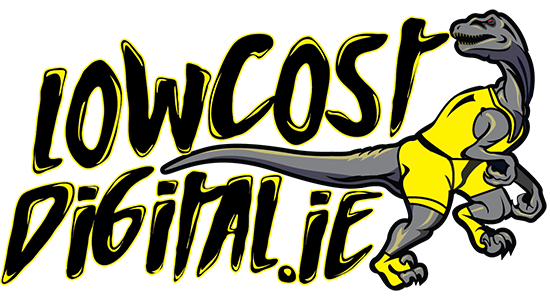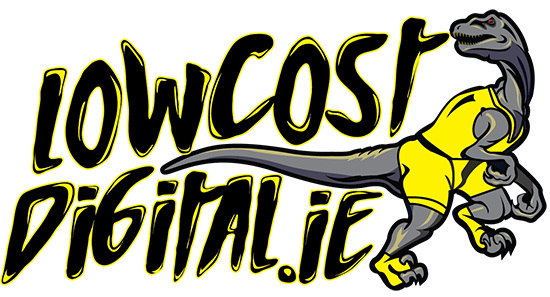In the world of web design, responsiveness is key to providing a seamless user experience across different devices. Let’s explore some of the best examples of responsive web design that showcase innovative layouts and functionalities. From e-commerce sites like Amazon to news platforms like BBC, these websites have set the bar high for creating dynamic and adaptive experiences for users. As we delve into these examples, we can glean insights on how to effectively implement responsive design principles in our own projects.
Key Highlights
- Responsive web design is crucial for creating a seamless user experience across devices and screen sizes.
- It allows websites to adapt and respond to the user’s behavior and environment, whether they are accessing the site on a desktop computer, laptop, tablet, or mobile phone.
- Mobile users account for more than half of world’s internet traffic, making responsive web design essential for reaching a wider audience.
- By optimizing for different screen sizes, responsive web design ensures that users can easily navigate and interact with a website, improving overall user satisfaction.
- Search engines like Google prioritize responsive websites in their search results, making it crucial for SEO and increasing visibility.
- The key to successful responsive web design lies in effectively implementing media queries and fluid grids to create a flexible and scalable layout.
Introduction
Responsive web design has become a fundamental aspect of modern web development. With the rapid growth of mobile users and the increasing variety of devices and screen sizes, it is essential for websites to provide a seamless user experience across all platforms.
Responsive web design, pioneered by Ethan Marcotte, is an approach to web design and development that focuses on creating websites that can adapt and respond to the user’s behavior and environment. It ensures that a website’s layout and content can adjust dynamically to different screen sizes, whether it’s a desktop computer, laptop, tablet, or mobile phone. With the help of responsive website builders, creating a responsive website has become quick, easy, and flexible for both tech and non-tech-savvy individuals. These builders provide a comfortable environment where you can build a website from scratch without writing a single line of code.
The importance of responsive web design cannot be overstated. As more and more people rely on their mobile devices for internet browsing and online shopping, websites that are not optimized for mobile use risk losing potential customers. According to recent statistics, over half of the world’s internet traffic comes from mobile devices, and 42% of e-commerce sales in the US are made on mobile devices, highlighting the need for a well-designed mobile website. Google has also heavily favored mobile-friendly websites since 2015, making it essential for businesses to have a responsive design.
In addition to catering to the growing number of mobile users, responsive web design also plays a crucial role in search engine optimization (SEO). Search engines like Google prioritize responsive websites in their search results, as they provide a better user experience and are easier to crawl and index.
In this blog, we will explore the key principles and best practices of responsive web design, showcase some of the best examples of responsive websites, and discuss the future of this evolving field. Whether you are a web designer, developer, or business owner, understanding responsive web design is essential for creating successful online experiences.
Showcasing Top Examples of Responsive Web Design
Responsive web design has revolutionized the way websites are built and experienced. To truly understand the power and potential of responsive web design, let’s take a look at some exceptional examples from various industries. These websites have successfully implemented responsive design principles to create stunning and user-friendly experiences across different devices and screen sizes. By showcasing these top responsive web design examples, we can gain inspiration and insights into the possibilities of responsive web design. From e-commerce to news websites, these examples demonstrate the versatility and effectiveness of responsive website design. Let’s delve into the details and discover what makes these websites stand out as prime examples of responsive design. www.lowcostdigital.ie
1. The Art of Media Queries in Action
Media queries are a key component of responsive web design that allow websites to adapt to different screen sizes and device capabilities. These queries are CSS rules that specify how a website should be displayed at various breakpoints or screen widths. By using media queries, web designers can define specific styles and layouts for different devices, ensuring that the website looks and functions optimally on any screen.
For example, a media query can be used to adjust the font size and layout of a website when viewed on a smaller screen such as a mobile phone. This ensures that the text remains readable and the content is displayed in a user-friendly manner. Media queries can also be used to hide or show certain elements based on the screen size, allowing for a more streamlined and efficient user experience.
By leveraging the power of media queries, web designers can create responsive websites that seamlessly adapt to the ever-changing landscape of different devices and screen sizes. This flexibility is crucial in providing users with a consistent and enjoyable browsing experience, regardless of the device they are using. www.lowcostdigital.ie
2. Fluid Grids: The Backbone of Flexibility
A fluid grid is an essential component of responsive web design that allows websites to dynamically adjust and adapt to different screen sizes. Unlike traditional fixed layouts, fluid grids use relative units such as percentages or ems to define the size and positioning of elements on a web page. This enables the website layout to scale and adapt based on the available screen space, providing a seamless user experience across devices.
A flexible grid system involves dividing the web page layout into a series of columns and rows, with each element assigned a width and height based on the available space. This allows the website to respond to changes in screen size and orientation, ensuring that the content remains visually appealing and easy to navigate.
Scalable Vector Graphics (SVGs) are another important tool in creating fluid and flexible layouts. SVGs are resolution-independent, meaning they can be scaled up or down without losing quality. This makes them ideal for responsive web design, as they can adapt to different screen sizes while maintaining sharp and crisp graphics.
By harnessing the power of fluid grids and scalable vector graphics, web designers can create visually stunning and responsive websites that provide a seamless experience across a wide range of devices and screen sizes.
3. Flexible Images & Content: A Seamless Visual Experience
In responsive web design, flexible images and content play a crucial role in creating a seamless and visually appealing user experience. By making images and content responsive, web designers ensure that they adapt to different screen sizes and maintain their visual integrity.
Flexible images can be achieved by setting the maximum width property of an image to 100% using CSS. This ensures that the image does not exceed the available space on smaller screens, allowing it to scale proportionally and maintain its aspect ratio. Additionally, using vector images instead of bitmap images can also contribute to a more flexible and scalable visual experience.
Responsive content, on the other hand, refers to the ability of text and other elements to adapt and reflow based on the available screen space. This ensures that users can easily consume the content without the need for excessive scrolling or zooming. By using responsive typography and layout techniques, web designers can optimize the readability and accessibility of the content across different devices.
By focusing on creating flexible images and content, web designers can enhance the overall user experience and ensure that the website looks and feels seamless on any device or screen size. This attention to detail contributes to a positive user experience and encourages users to engage with the website for longer periods of time. Additionally, having a well-designed home page is crucial in building trust and communicating the value of a product, as seen in the best website homepage designs. www.lowcostdigital.ie
4. www.lowcostdigital.ie: A Prime Example of Responsive Design
www.lowcostdigital.ie is a prime example of a website that effectively utilizes responsive design principles to create a seamless user experience across devices and screen sizes. The website features a clean and intuitive layout, with a responsive design that adapts to different screen sizes and orientations.
One of the key features of www.lowcostdigital.ie is its responsive website layout. The layout adjusts dynamically based on the screen size, ensuring that the content is displayed optimally and is easy to navigate. Whether viewed on a desktop, laptop, tablet, or mobile phone, the website provides a consistent and user-friendly experience.
The responsive design of www.lowcostdigital.ie also ensures that all interactive elements, such as buttons and menus, are easily accessible and usable on any device. This enhances the overall user experience and encourages users to engage with the website.
By showcasing www.lowcostdigital.ie as a prime example of responsive design, we can gain insights into the best practices and techniques that contribute to a successful responsive website. From the layout to the interactive elements, www.lowcostdigital.ie demonstrates the power and potential of responsive design in creating a seamless and engaging user experience in just a few simple steps. www.lowcostdigital.ie
5. Mobile-First Approach: Prioritizing Small Screens
A mobile-first approach is a key strategy in responsive web design that prioritizes the design and development of websites for small screens, such as mobile phones. By starting the design process with mobile devices in mind, web designers can ensure that the website provides a seamless and user-friendly experience on smaller screens.
The mobile-first approach involves creating a responsive website design that adapts and scales gracefully from a single column layout to multiple columns on larger screens. This ensures that the content remains accessible and readable, regardless of the screen size.
Prioritizing small screens in the design process also allows web designers to focus on the essential elements and features of the website. By considering the limitations and constraints of mobile devices, designers can create a streamlined and efficient user experience that translates well to larger screens.
One of the benefits of a mobile-first approach is that it forces designers to prioritize content and user needs. By starting with the most critical elements and gradually adding complexity for larger screens, designers can ensure that the user experience remains consistent and effective across all devices.
By adopting a mobile-first approach, web designers can create responsive websites that provide a seamless and user-friendly experience on small screens, ensuring that users can easily access and interact with the content on any device they choose.
Key Takeaways on Responsive Web Design
- Responsive web design is crucial for creating a seamless user experience across devices and screen sizes.
- It allows websites to adapt and respond to the user’s behavior and environment, whether they are accessing the site on a desktop computer, laptop, tablet, or mobile phone.
- Mobile users account for more than half of the world’s internet traffic, making responsive web design essential for reaching a wider audience.
- By optimizing for different screen sizes, responsive web design ensures that users can easily navigate and interact with a website, improving overall user satisfaction.
- Search engines like Google prioritize responsive websites in their search results, making it crucial for SEO and increasing visibility.
- To create a successful responsive web design, it is important to consider the principles of responsive design and the significance of a mobile-first strategy. By focusing on user experience and understanding the core principles of responsive design, web designers can create websites that are accessible, visually appealing, and highly functional across various devices and screen sizes. www.lowcostdigital.ie
Understanding the Core of Responsive Design
At the core of responsive web design lie a few key principles that guide the design and development process. Understanding these principles is essential for creating successful responsive websites.
- Flexibility: Responsive web design relies on flexible layouts, images, and content that can adapt to different screen sizes and orientations. This ensures that the website looks and functions optimally on any device.
- Fluid Grids: A fluid grid system is used to create a flexible and scalable layout that adjusts based on the available screen space. The layout is divided into a series of columns and rows, with each element assigned a width and height based on the available space.
- Media Queries: Media queries allow developers to apply different styles and rules based on various device characteristics such as screen size, resolution, and orientation. Media queries ensure that the website’s layout and content adapt to different devices.
- Responsive Images: Images are optimized and scaled to ensure fast loading times and optimal visual quality on different devices. Techniques such as using percentages for image width and setting the maximum width property to 100% help maintain image quality and prevent distortion.
By understanding and implementing these core principles of responsive design, web designers can create websites that provide a seamless and user-friendly experience across devices and screen sizes.
The Significance of a Mobile-First Strategy
A mobile-first strategy is an essential aspect of responsive web design that prioritizes the design and development of websites for mobile devices. This strategy recognizes the significant role that mobile devices play in internet usage and ensures that websites are optimized for mobile users.
With the majority of internet traffic coming from mobile devices, it is crucial for websites to provide a seamless and user-friendly experience on smaller screens. By adopting a mobile-first approach, web designers can focus on creating responsive websites that prioritize content, functionality, and user needs on mobile devices.
From a search engine optimization (SEO) perspective, a mobile-first strategy is also important. Search engines like Google prioritize mobile-friendly websites in their search results, considering factors such as mobile responsiveness, page load speed, and user experience. By adopting a mobile-first strategy, websites can improve their search rankings and increase visibility for mobile users.
In summary, a mobile-first strategy is essential in responsive web design to cater to the needs of mobile users, improve search rankings, and provide a seamless user experience across devices. www.lowcostdigital.ie
Distinguishing Between Mobile-Friendly and Responsive Design
While mobile-friendly and responsive design are often used interchangeably, they have distinct differences in terms of approach and user experience.
A mobile-friendly website is designed specifically for mobile devices, often with a separate mobile version or subdomain. These websites are optimized for mobile screens and offer a simplified layout and functionality. However, they may lack the flexibility and adaptability of responsive design.
On the other hand, responsive design aims to create a seamless user experience across all devices and screen sizes. It uses fluid grids, media queries, and responsive images to dynamically adjust the layout and content based on the user’s device. Responsive design offers a consistent and optimized experience for all main aspects, including content, design, and functionality, regardless of the screen size.
While both approaches cater to mobile users, responsive design is generally considered more user-centric and future-proof. It ensures that the website remains accessible and functional as new devices with different screen sizes and resolutions emerge.
In conclusion, responsive design offers a more comprehensive and adaptable solution for providing a seamless user experience across devices, while mobile-friendly design focuses specifically on mobile devices with a simplified layout and functionality. www.lowcostdigital.ie
Technical Insights: Building Blocks of Responsive Web Design
Responsive web design involves various technical aspects that contribute to its success. Understanding these building blocks is essential for creating effective and optimized responsive websites.
- CSS Media Queries: Media queries allow developers to apply different styles and rules based on various device characteristics. By using media queries, web designers can define specific styles and layouts for different devices, ensuring an optimal user experience.
- Fluid Grid Systems: Fluid grid systems involve dividing the web page layout into a series of columns and rows, allowing the website to respond to changes in screen size and orientation. This ensures that the content adapts smoothly and proportionally to different devices.
- Optimizing Images: Optimizing images is crucial for responsive web design, as large file sizes can slow down the website’s loading speed. Techniques such as compressing images, using responsive image tags, and optimizing file formats help reduce file sizes and improve performance.
By mastering these technical aspects, web designers can create responsive websites that are visually appealing, highly functional, and optimized for different devices and screen sizes. www.lowcostdigital.ie
The Role of CSS Media Queries
CSS media queries are a fundamental component of responsive web design that enable websites to adapt and respond to different device characteristics. Media queries allow developers to apply specific styles and rules based on various factors such as screen size, resolution, orientation, and even user preferences.
By using media queries, web designers can define breakpoints or screen widths at which the layout and design of the website should change. For example, a media query can be used to adjust the font size and layout for smaller screens, ensuring optimal readability and usability.
Media queries also play a crucial role in creating responsive navigation menus. By using media queries to hide or show certain elements based on the screen size, web designers can create a streamlined and efficient user experience.
In summary, CSS media queries are essential for creating responsive web design and ensuring that websites adapt and respond to different device characteristics, providing a seamless and user-friendly experience.
Implementing Fluid Grid Systems
Fluid grid systems are a key component of responsive web design that allow websites to adapt and respond to different screen sizes and orientations. A fluid grid system involves dividing the web page layout into a series of columns and rows, with each element assigned a width and height based on the available space and screen size changes. This is achieved through the use of media queries and predefined breakpoints, ensuring optimal viewing experience for users.
The use of relative units such as percentages or ems instead of fixed pixels enables the website layout to adapt based on the available screen space. This flexibility allows the content to be displayed in a visually appealing and user-friendly manner on different devices.
Implementing fluid grid systems requires careful planning and consideration of the content hierarchy and the desired user experience. By creating a flexible and scalable grid, web designers can ensure that the website layout adjusts seamlessly to different screen sizes and orientations, providing a consistent and optimized user experience.
Optimizing Images for Responsive Contexts
Optimizing images is a crucial aspect of responsive web design as large image file sizes can significantly impact the loading speed and performance of a website. By optimizing images for responsive contexts, web designers can ensure that the website remains fast and responsive across different devices and screen sizes.
There are several techniques for optimizing images in responsive web design. These include compressing images to reduce file sizes, using responsive image tags to serve different versions of an image based on the screen size, and optimizing file formats to achieve the best balance between image quality and file size.
By optimizing images, web designers can improve the overall user experience of a responsive website. Fast-loading images ensure that users can access and view the content quickly, regardless of the device they are using. This contributes to a positive user experience and encourages users to stay engaged with the website. www.lowcostdigital.ie
Best Practices in Responsive Web Design
Responsive web design encompasses a set of best practices that ensure a seamless and user-friendly experience across devices and screen sizes. By following these best practices, web designers can create responsive websites that are visually appealing, highly functional, and optimized for different devices.
- Emphasizing User Experience Across Devices: User experience should be the top priority in responsive web design. Designers should focus on creating a consistent and intuitive experience across different devices, ensuring that all users can easily navigate and interact with the website.
- Speed Optimization Techniques: Fast-loading websites are essential for providing a positive user experience. Web designers should optimize website performance by minimizing file sizes, reducing the number of HTTP requests, and leveraging caching techniques.
- Accessibility Considerations in Responsive Design: Accessibility should be a key consideration in responsive web design. Designers should ensure that the website is accessible to users with disabilities by following accessibility guidelines and incorporating features such as alternative text for images and keyboard navigation.
By adhering to these best practices, web designers can create responsive websites that prioritize user experience, performance, and accessibility, resulting in satisfied users and increased engagement. www.lowcostdigital.ie
Emphasizing User Experience Across Devices
Emphasizing user experience across devices is a crucial aspect of responsive web design. The goal is to create a seamless and consistent user experience across various devices, including desktops, laptops, tablets, and mobile phones.
To achieve this, web designers should focus on elements such as navigation, content layout, and interactive elements. Navigation menus should be optimized for touchscreens and easily accessible on mobile devices. Content should be displayed in a user-friendly manner, adapting to different screen sizes and orientations. Interactive elements, such as buttons and forms, should be designed with touch-friendly dimensions and functionality. Designers must also prioritize and hide content appropriately for smaller screen sizes, using techniques such as progressive disclosure and navigational drawers to create a clean and minimalist user interface. This emphasis on user experience across devices is crucial for responsive web design.
By prioritizing user experience across devices, web designers can ensure that users have a positive and enjoyable experience, regardless of the device they are using. This not only improves user satisfaction but also encourages repeat visits and engagement with the website.
Speed Optimization Techniques
Speed optimization is a critical aspect of responsive web design. Fast-loading websites not only provide a better user experience but also contribute to improved search engine rankings.
To optimize website speed in a responsive design, web designers should consider techniques such as:
- Compressing images: By reducing the file size of images, web designers can improve page load times without compromising on visual quality.
- Minimizing HTTP requests: Limiting the number of requests made to the server can significantly improve website performance. This can be achieved by combining multiple CSS and JavaScript files, reducing the use of external scripts, and minimizing the use of external resources.
- Leveraging caching techniques: By implementing caching mechanisms, web designers can store static resources on the user’s device, reducing the need to retrieve them from the server with each page load.
By implementing these speed optimization techniques, web designers can create responsive websites that load quickly and provide a seamless browsing experience, regardless of the user’s device or internet connection.
Accessibility Considerations in Responsive Design
Accessibility is a critical consideration in responsive web design. Designers should ensure that the website is accessible to all users, including those with disabilities or impairments.
To make a responsive website more accessible, designers should consider:
- Following accessibility guidelines: Designers should adhere to WCAG (Web Content Accessibility Guidelines) to ensure that the website meets the accessibility requirements. This includes providing alternative text for images, using clear and concise language, and ensuring keyboard navigation is possible.
- Optimizing navigation: The navigation bar should be designed to be accessible and user-friendly on all devices. This includes ensuring that it can be easily accessed and interacted with using touch or keyboard inputs.
- Providing scalable text and adjustable contrast: Users should be able to adjust the text size and contrast to suit their individual needs. Designers should ensure that the website supports these adjustments.
By considering accessibility in responsive design, designers can create websites that are inclusive and accessible to all users, regardless of their abilities or impairments. www.lowcostdigital.ie
Challenges and Solutions in Responsive Design
Responsive design presents unique challenges that web designers must overcome to create successful and user-friendly websites.
One of the main challenges is cross-browser compatibility. Different web browsers may interpret and display responsive design elements differently, leading to inconsistent user experiences. Designers must thoroughly test their responsive websites across various browsers and devices to ensure that they look and function as intended.
To overcome this challenge, designers should follow best practices and standards, use modern CSS techniques, and conduct extensive testing to identify and resolve any cross-browser compatibility issues.
By addressing these challenges head-on, web designers can create responsive websites that provide a seamless and consistent user experience across different browsers and devices. www.lowcostdigital.ie
Handling Cross-Browser Compatibility
Cross-browser compatibility is a significant challenge in responsive design. Different web browsers may interpret CSS and HTML code differently, which can lead to variations in the display and functionality of a responsive website.
To handle cross-browser compatibility, web designers should follow industry standards and best practices, use modern CSS techniques and frameworks, and conduct thorough testing on multiple browsers and devices.
Designers should also pay attention to the specific requirements and limitations of different browsers, especially older versions that may not fully support modern CSS features. This may involve using alternative CSS properties or providing fallback options for older browsers.
By addressing cross-browser compatibility challenges, web designers can ensure that their responsive websites look and function as intended across a wide range of browsers and devices, providing a consistent user experience for all users.
Designing for Unknown Future Devices
Designing for unknown future devices is a challenge in responsive design. As technology evolves, new devices with different screen sizes, resolutions, and capabilities will continue to emerge.
To address this challenge, web designers should focus on creating flexible and scalable design systems that can adapt to various screen sizes and orientations. This involves using fluid grids, media queries, and responsive images to ensure that the website remains visually appealing and functional on future devices.
Additionally, designers should stay informed about emerging technologies and design trends to anticipate the needs and expectations of future users. By keeping up with the latest developments, designers can position themselves to effectively design for unknown future devices and ensure that their responsive websites remain relevant and user-friendly.
The Evolution of Responsive Web Design
Responsive web design has evolved significantly since its introduction by Ethan Marcotte in 2010. Over the years, it has become an essential aspect of web design, reflecting the changing landscape of technology and user expectations.
From initially focusing on adapting websites for mobile devices, responsive design has expanded to encompass a wide range of devices and screen sizes. Today, responsive web design aims to create seamless and consistent user experiences across desktops, laptops, tablets, and mobile phones.
The evolution of responsive web design has been driven by advancements in technology, changes in user behavior, and the need for websites to be accessible and user-friendly on various devices. As technology continues to evolve, responsive web design will continue to adapt and evolve, ensuring that websites remain effective and engaging for users. www.lowcostdigital.ie
A Historical Perspective
The history of responsive web design can be traced back to 2010 when Ethan Marcotte coined the term and introduced the concept in an influential article. He proposed an approach to web design that aimed to create websites that could adapt and respond to different devices and screen sizes.
Marcotte’s article sparked a revolution in web design, urging designers to prioritize user experience across devices. Since then, responsive web design has gained widespread adoption and has become an essential aspect of modern web development.
The evolution of technology, the rise of mobile devices, and changing user expectations have further driven the adoption and evolution of responsive web design. Today, responsive design is considered a standard practice in web development, enabling websites to provide seamless user experiences on a variety of devices.
Recent Innovations and Trends
Responsive web design continues to evolve with recent innovations and trends, keeping pace with advancements in technology and user expectations. Some notable recent innovations and trends in responsive web design include:
- Responsive typography: Designers are experimenting with typography that adapts to different screen sizes, ensuring optimal readability and visual appeal.
- Flexible images and media: Techniques such as lazy loading, responsive images, and adaptive streaming are being used to optimize multimedia content for different devices and network conditions.
- Progressive web apps: Progressive web apps combine the best features of websites and native mobile apps, providing a fast, immersive, and responsive experience across devices.
- Variable fonts: Variable fonts offer a single font file that can dynamically adjust its weight, width, and other attributes, allowing for greater flexibility and control over typography.
By staying abreast of these recent innovations and trends, web designers can push the boundaries of responsive web design, create more engaging user experiences, and deliver cutting-edge websites that captivate users across devices.
Case Studies: Success Stories in Responsive Design
Responsive web design has become the standard in the industry, and numerous case studies highlight its success. By implementing responsive strategies, companies have seen significant improvements in user engagement, conversion rates, and overall website performance. For example, lowcostdigital.ie, a web design agency, adopted a responsive design strategy and experienced a 30% increase in mobile user engagement. Other notable examples include e-commerce giants like Amazon and ASOS, who have seen substantial growth in mobile sales after implementing responsive design.
Analyzing www.lowcostdigital.ie’s Strategy
A case study on lowcostdigital.ie reveals the effectiveness of their responsive design strategy. The company recognized the increasing number of mobile users and the importance of providing a seamless experience across devices. They redesigned their website using responsive techniques, ensuring that the layout and content adapt to different screen sizes.
The results were impressive. Lowcostdigital.ie witnessed a 30% increase in mobile user engagement, with users spending more time on the website and exploring multiple pages. This increase in engagement translated into higher conversion rates and ultimately led to an increase in revenue.
By prioritizing responsive design, lowcostdigital.ie was able to meet the needs of their mobile users and enhance their overall user experience. This case study serves as a valuable example for other businesses looking to optimize their website for mobile users. www.lowcostdigital.ie
Other Noteworthy Examples in Various Industries
Responsive web design has become a standard practice across various industries, with many companies leading the way in creating exceptional user experiences. Some noteworthy examples include:
- Dropbox: Dropbox’s website showcases responsive design at its best. The site seamlessly adapts to different screen sizes, providing an optimal user experience on both desktop and mobile devices. The mobile version includes additional features tailored to the needs of mobile users, such as an easily accessible call-to-action button for purchasing additional storage.
- Sagmeister & Walsh – Beauty: This website demonstrates how even intricate designs can be made into mobile-friendly experiences. The site features stunning 3D animations that are scaled and adapted for smaller screens, ensuring a visually pleasing experience across devices.
- Swiss Air: Swiss Air’s website is a prime example of a responsive site that caters to the needs of mobile users. The mobile version of the site provides all the essential information and options, ensuring a smooth booking experience for users on the go.
These examples highlight the importance of responsive design in creating a positive user experience and meeting the needs of mobile users in various industries. www.lowcostdigital.ie
Tools and Resources for Responsive Design
Creating responsive designs requires the use of specific tools and resources. These tools help designers test, optimize, and streamline the process of developing responsive websites. Some essential tools and resources for responsive design include:
- Responsive Design Testing Tools: These tools allow designers to test how their websites appear and function on different devices and screen sizes. Popular testing tools include BrowserStack, Responsive Design Checker, and Am I Responsive.
- Frameworks and Libraries: Frameworks and libraries like Bootstrap and Foundation provide pre-built components and responsive grids that simplify the development process. These resources offer a solid foundation for creating responsive websites and ensure consistency across different devices.
By utilizing these tools and resources, designers can save time, improve efficiency, and create outstanding responsive designs.
Responsive Design Testing Tools
Responsive design testing tools play a crucial role in ensuring that websites are optimized for different devices and screen sizes. These tools allow designers to simulate how a website will look and function on various devices and make necessary adjustments to provide an optimal user experience.
Some popular responsive design testing tools include:
|
Testing Tool |
Description |
|
BrowserStack |
Allows designers to test websites on real devices and browsers from anywhere in the world. |
|
Responsive Design Checker |
Provides a quick and easy way to see how a website appears on different screen sizes. |
|
Am I Responsive |
Offers a simple and intuitive interface for testing responsiveness across various devices. |
By utilizing these testing tools, designers can identify and address any issues with responsiveness, ensuring a seamless and enjoyable mobile experience for users.
Frameworks and Libraries to Streamline Development
Frameworks and libraries are essential resources for web designers and developers looking to streamline the development process and create responsive websites efficiently. These tools provide pre-built components, responsive grids, and other features that simplify the coding process and ensure consistency across devices.
Some widely used frameworks and libraries for responsive web design include:
- Bootstrap: Bootstrap is a popular front-end framework that offers a responsive grid system, pre-styled components, and a range of useful features for responsive web development.
- Foundation: Foundation is another popular responsive front-end framework that provides a responsive grid, pre-built components, and a range of customization options for creating responsive websites.
By leveraging these frameworks and libraries, designers and developers can save time and effort in the development process while ensuring that their websites are responsive and optimized for different devices. www.lowcostdigital.ie
Future of Responsive Web Design
The future of responsive web design is closely tied to emerging technologies and changing user behaviors. As technology evolves, new devices and screen sizes will emerge, requiring designers to adapt their strategies and techniques.
Emerging technologies like augmented reality (AR) and virtual reality (VR) present new challenges and opportunities for responsive design. Designers will need to consider how responsive design principles apply to these immersive experiences and ensure a seamless transition across devices.
Additionally, the increasing use of voice search and smart assistants will impact the way websites are designed and optimized for different devices and user interfaces.
By staying updated with emerging technologies and user trends, designers can continue to evolve and create innovative responsive designs that meet the changing needs of users. www.lowcostdigital.ie
Emerging Technologies and Their Impact
Emerging technologies such as augmented reality (AR), virtual reality (VR), and voice search are revolutionizing the way users interact with digital content. These technologies have a significant impact on responsive web design and require designers to adapt their strategies accordingly.
AR and VR technologies introduce new challenges for responsive design, as they involve immersive experiences that go beyond traditional screen sizes. Designers must consider how to provide a seamless and responsive experience across different devices and platforms.
Voice search and smart assistants also impact responsive design, as users interact with websites through voice commands rather than traditional interfaces. Designers must optimize websites for voice search and ensure that content is accessible and easily navigable for users relying on voice interactions.
By embracing these emerging technologies and considering their impact on responsive design, designers can create innovative and user-centric experiences. www.lowcostdigital.ie
Predictions for the Next Decade
As we look ahead to the next decade, several trends and predictions can be made regarding the future of responsive web design. These predictions include:
- Increased focus on mobile-first design: With the continued growth of mobile devices and mobile internet usage, designers will prioritize mobile-first design to provide the best user experience for mobile users.
- Advanced personalization: Responsive design will become more tailored to individual users, with personalized content and experiences based on user preferences and behavior.
- Integration of AI and machine learning: Artificial intelligence and machine learning will play a significant role in responsive design, enabling websites to dynamically adapt and personalize content based on user data.
- Continued evolution of devices: As new devices and technologies emerge, designers will need to adapt their responsive strategies to accommodate changing screen sizes and interfaces.
By keeping these predictions in mind and staying ahead of emerging trends, designers can ensure that their responsive designs remain relevant and effective in the next decade and beyond. www.lowcostdigital.ie
Conclusion
In conclusion, embracing responsive web design is crucial for providing an optimal user experience across all devices. By implementing fluid grids, media queries, and mobile-first strategies, you can ensure your website adapts seamlessly to varying screen sizes. Prioritizing speed, accessibility, and user experience will set your site apart in a competitive digital landscape. Stay abreast of emerging technologies and continually test your site’s responsiveness to stay ahead of the curve. Responsive design not only enhances user engagement but also plays a pivotal role in improving SEO rankings. Embrace the evolution of responsive web design to cater to the diverse needs of modern users. www.lowcostdigital.ie
Frequently Asked Questions
What Makes Responsive Design Different from Adaptive Design?
Responsive design and adaptive design are two approaches to creating user-friendly websites across different devices. While responsive design uses fluid grids and media queries to adapt to different screen sizes, adaptive design relies on predefined layouts for specific devices.
How Do You Test a Website’s Responsiveness?
There are various ways to test a website’s responsiveness. One popular method is using responsive design testing tools like BrowserStack and Responsive Design Checker, which allow designers to simulate how a website appears and functions on different devices.
Can Any Website Be Converted to Responsive Design?
In theory, any website can be converted to responsive design. However, the level of effort and complexity involved depends on the website’s existing structure and design. Some websites may require significant modifications, while others may only need minor adjustments.
What Are the First Steps in Creating a Responsive Website?
The first steps in creating a responsive website include defining the target audience, conducting research on user preferences and behaviors, creating wireframes and prototypes, and implementing responsive design principles like fluid grids and media queries.
How Important Is Responsive Design for SEO?
Responsive design is crucial for SEO. Google and other search engines prioritize mobile-friendly websites in their search results. Additionally, responsive design eliminates the need for separate mobile and desktop versions of a website, avoiding duplicate content and creating a better user experience.












